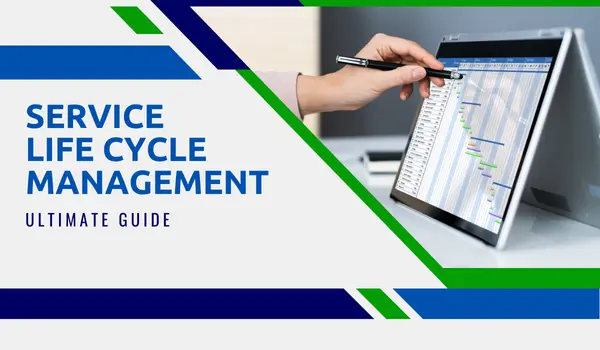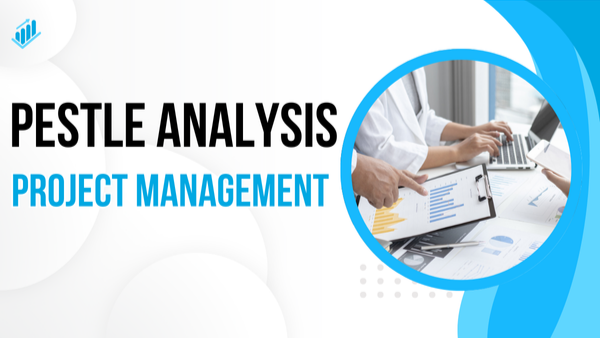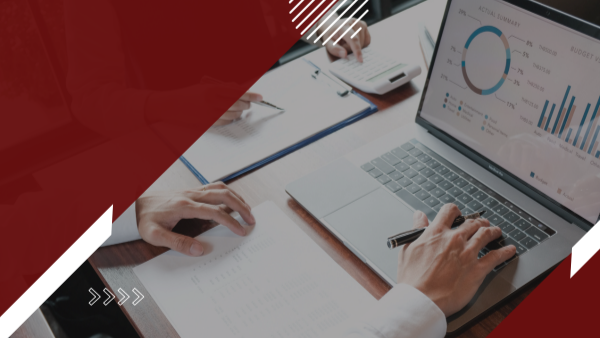
Ultimate Guide to Service Life Cycle Management: Maximize Asset Value
Service Life Cycle Management (SLM) is the backbone of any successful service-oriented business, ensuring that products and services perform at their best from inception to retirement. By strategically managing each stage of a service's life cycle design, implementation, maintenance, and disposal businesses can maximize efficiency, reduce costs, and enhance customer satisfaction.
Table of Contents
- What is service life cycle management?
- Why should you care about slcm?
- The stages of service life cycle management
- 1. planning and acquisition
- 2. installation and commissioning
- 3. operation and maintenance
- 4. upgrade or refurbishment
- 5. disposal or replacement
- Best practices for effective slcm
- Use asset management software
- Implement preventive maintenance
- Train your team
- Analyze data regularly
- Plan for the future
- Common challenges in slcm (and how to overcome them)
- Resistance to change
- Information overload
- Budget constraints
- Faq
- Wrapping up
In this blog, we'll explore the key elements of SLM and how it can transform the way companies manage their services, driving both long-term growth and customer loyalty. Keep reading to uncover the essential strategies for optimizing your service operations.
What is Service Life Cycle Management?
Service Life Cycle Management is a strategic approach to managing assets throughout their entire lifespan. It covers everything from the initial purchase to the final disposal of an asset. The goal? To get the most value possible out of each asset while keeping costs down.
Think of SLCM as a roadmap for your assets. It helps you plan for maintenance, upgrades, and eventually, replacement. By following this roadmap, you can avoid unexpected breakdowns, extend the life of your assets, and save money in the long run.
Why Should You Care About SLCM?
You might be wondering, "Why should I bother with SLCM?" Well, here are a few reasons:
1. Cost Savings: By planning ahead and maintaining your assets properly, you can avoid expensive emergency repairs and replacements.
2. Improved Efficiency: Well-maintained assets work better and more efficiently, which can boost your overall productivity.
3. Better Decision Making: SLCM gives you data and insights that help you make smarter choices about when to repair, upgrade, or replace assets.
4. Increased Asset Lifespan: With proper care and maintenance, your assets can last longer, giving you more bang for your buck.
5. Regulatory Compliance: Many industries have strict regulations about asset management. SLCM helps you stay compliant and avoid costly fines.
The Stages of Service Life Cycle Management
Now that you know why SLCM is important, let's break down the different stages of the process.
1. Planning and Acquisition
This is where it all begins. In this stage, you'll:
-
Identify your needs
-
Research different options
-
Make a purchase decision
-
Plan for installation and integration
The key here is to think long-term. Don't just focus on the upfront cost consider factors like maintenance requirements, energy efficiency, and expected lifespan.
2. Installation and Commissioning
Once you've made your purchase, it's time to get your new asset up and running. This stage involves:
-
Proper installation
-
Testing and quality assurance
-
Staff training
-
Documentation of procedures
Doing this stage right sets the foundation for the rest of the asset's life. It's worth taking the time to do it properly.
3. Operation and Maintenance
This is the longest stage of the asset's life cycle. During this time, you'll:
-
Use the asset for its intended purpose
-
Perform regular maintenance
-
Monitor performance
-
Make repairs as needed
The goal here is to keep the asset running smoothly and efficiently for as long as possible.
4. Upgrade or Refurbishment
As technology advances and your needs change, you might need to upgrade your asset. This stage involves:
-
Assessing the asset's current performance
-
Identifying areas for improvement
-
Implementing upgrades or refurbishments
Sometimes, a well-timed upgrade can significantly extend an asset's useful life, saving you from having to replace it entirely.
5. Disposal or Replacement
Eventually, every asset reaches the end of its useful life. At this point, you'll need to:
-
Safely and responsibly dispose of the asset
-
Consider recycling options
-
Plan for a replacement
Even at this stage, there's potential to recover some value through proper disposal or recycling.
Best Practices for Effective SLCM
Now that you understand the stages of SLCM, let's look at some best practices to help you get the most out of this approach.
Use Asset Management Software
Keeping track of all your assets manually is a recipe for headaches. Asset management software can help you:
-
Track maintenance schedules
-
Monitor asset performance
-
Store important documentation
-
Generate reports for decision-making
With the right software, you can automate many aspects of SLCM, making your job easier and more effective.
Implement Preventive Maintenance
Don't wait for things to break before you fix them. Preventive maintenance involves:
-
Regular inspections
-
Scheduled maintenance tasks
-
Early detection of potential issues
By catching and addressing problems early, you can avoid costly breakdowns and extend the life of your assets.
Train Your Team
Your staff plays a crucial role in SLCM. Make sure they're equipped with the knowledge and skills they need by:
-
Providing regular training sessions
-
Creating clear operating procedures
-
Encouraging a culture of care for assets
When everyone understands the importance of proper asset management, you'll see better results across the board.
Analyze Data Regularly
One of the biggest benefits of SLCM is the wealth of data it provides. Make the most of this by:
-
Regularly reviewing performance data
-
Identifying trends and patterns
-
Using data to inform decisions about repairs, upgrades, and replacements
Data-driven decision making can lead to significant cost savings and improved asset performance.
Plan for the Future
SLCM isn't just about managing your current assets – it's also about planning for the future. This involves:
-
Forecasting future needs
-
Budgeting for replacements and upgrades
-
Staying informed about technological advancements in your industry
By thinking ahead, you can make strategic decisions that set your business up for long-term success.
Common Challenges in SLCM (and How to Overcome Them)
While SLCM offers many benefits, it's not without its challenges. Here are some common hurdles you might face, and how to overcome them:
Resistance to Change
You might encounter staff who are reluctant to adopt new SLCM practices. To address this:
-
Communicate the benefits clearly
-
Involve staff in the implementation process
-
Provide ample training and support
Information Overload
SLCM generates a lot of data, which can be overwhelming. To manage this:
-
Use software to organize and analyze data
-
Focus on key performance indicators
-
Present data in easy-to-understand formats
Budget Constraints
Implementing SLCM can require upfront investment. To manage costs:
-
Start small and scale up
-
Focus on high-priority assets first
-
Demonstrate ROI to secure buy-in from leadership
FAQ
Question: What is Service Life Cycle Management?
Answer: Service Life Cycle Management (SLM) is a comprehensive approach to managing a product's service phase throughout its entire life cycle. This includes planning, delivery, maintenance, and the eventual retirement of the product. The goal is to maximize product efficiency, reduce downtime, and ensure customer satisfaction through continuous service improvements.
2. What are the key phases of Service Life Cycle Management?
Answer: The key phases of Service Life Cycle Management typically include:
1. Planning: Defining service strategies and objectives.
2. Delivery: Implementing the service plan, including product deployment and customer support.
3. Maintenance: Ongoing maintenance and support to ensure the product's optimal performance.
4. Retirement: Decommissioning the product once it has reached the end of its useful life.
3. Why is Service Life Cycle Management important for businesses?
Answer: Service Life Cycle Management is crucial for businesses as it helps enhance customer satisfaction, optimize product performance, and reduce operational costs. By efficiently managing the service phase, companies can minimize downtime, extend product lifespan, and create opportunities for service-related revenue streams.
4. How does Service Life Cycle Management impact customer satisfaction?
Answer: SLM improves customer satisfaction by ensuring timely and efficient service delivery throughout the product's life. By providing proactive maintenance and support, companies can prevent issues before they arise, minimizing disruptions for customers and boosting their overall experience.
5. What industries benefit most from Service Life Cycle Management?
Answer: Industries that deal with complex, high-value products benefit the most from SLM, including:
Manufacturing, Aerospace, Automotive, Healthcare, IT services.
These industries rely on effective service management to maintain product performance and ensure customer satisfaction.
6. What role does technology play in Service Life Cycle Management?
Answer: Technology is integral to modern SLM. Digital tools like predictive analytics, IoT (Internet of Things), and AI help businesses monitor product performance in real-time, predict maintenance needs, and automate service processes, resulting in improved efficiency and reduced costs.
7. How does Service Life Cycle Management differ from Product Life Cycle Management?
Answer: While Product Life Cycle Management (PLM) focuses on managing the entire life of a product from concept to disposal, Service Life Cycle Management (SLM) specifically addresses the service and maintenance phase after the product has been delivered. SLM ensures the product remains functional and valuable to the customer throughout its use.
8. What are the challenges of implementing Service Life Cycle Management?
Answer: The main challenges include:
Complexity in managing large volumes of data
Integration with existing systems
Ensuring consistent service across multiple locations
Training staff to effectively use new SLM tools
Adapting to rapidly changing customer demands
9. How can Service Life Cycle Management increase revenue?
Answer: SLM can increase revenue by offering service contracts, extended warranties, and premium maintenance packages. Additionally, by improving service efficiency, companies can reduce operational costs, retain customers longer, and potentially upsell new products or services during the product’s life cycle.
10. What are the best practices for Service Life Cycle Management?
Answer: Best practices for SLM include:
Proactive maintenance using predictive analytics to prevent failures.
Clear communication with customers regarding service expectations.
Continuous improvement of service processes through feedback and performance data.
Effective integration of digital tools to streamline service operations and track product performance in real-time.
Wrapping Up
Service Life Cycle Management is a powerful tool for maximizing the value of your assets. By following the stages of SLCM and implementing best practices, you can reduce costs, improve efficiency, and make smarter decisions about your assets.
Remember, SLCM is not a one-time task, but an ongoing process. It requires commitment and consistency, but the rewards are well worth the effort. With SLCM, you'll be able to get more value out of your assets, reduce unexpected downtime, and set your business up for long-term success.
So, are you ready to take control of your asset management? Start implementing SLCM today, and watch as your asset value soars!

About Anita Ankam
Anita Ankam – Expert Project Management Instructor
Anita Ankam is a highly experienced and certified project management instructor, specializing in globally recognized methodologies such as PMP®, PMI-ACP®, DASM®, and DASSM®. With an extensive academic background, including an MBA and MSc, Anita holds multiple industry-leading certifications, including PRINCE2, PRINCE2 Agile Practitioner, CSM, ASM, ITIL, and Six Sigma Black Belt.
As an authorized training instructor, Anita has guided countless professionals in mastering project management frameworks and agile practices. Know more.
Related Posts

Featured Links
Contact us
- PMP® Certification Course |
- CAPM Certification Course |
- PMP Certification Training in Mumbai |
- PMP Certification Training in Pune |
- PMP Certification Training in Hyderabad |
- PMP Certification Training in Delhi |
- PMP Certification Training in Chennai |
- PMP Certification Training Course in Ahmedabad |
- PMP Certification Training Course in Bangalore |
- PMP Certification Training Course in Bhubaneswar |
- PMP Certification Training Course in Chandigarh |
- PMP Certification Training Course in Gandhinagar |
- PMP Certification Training Course in Faridabad |
- PMP Certification Training Course in Dombivli |
- PMP Certification Training Course in Coimbatore |
- PMP Certification Training Course in Ghaziabad |
- PMP Certification Training Course in Gurgaon |
- PMP Certification Training Course in Indore |
- PMP Certification Training Course in Jaipur |
- PMP Certification Training Course in Mysore |
- PMP Certification Training Course in Lucknow |
- PMP Certification Training Course in Kolkata |
- PMP Certification Training Course in Kochi |
- PMP Certification Training Course in Nagpur |
- PMP Certification Training Course in Navi Mumbai |
- PMP Certification Training Course in Patna |
- PMP Certification Training Course in Pimpri |
- PMP Certification Training Course in Vadodara |
- PMP Certification Training Course in Trivandrum |
- PMP Certification Training Course in Thane |
- PMP Certification Training Course in Surat |
- PMP Certification Training Course in Noida |
- PMP Certification Training Course in Visakhapatnam |
- PMP® Certification Training Course in Doha |
- PMP Certification Training in New York |
- PMP Certification Training Course in Chicago |
- PMP Certification Training in Austin |
- PMP Certification Training in Minneapolis |
- PMP Certification Training in Atlanta |
- PMP Certification Training in Dallas |
- PMP Certification Training in San Diego |
- CAPM Certification Training in Mumbai |
- CAPM Certification Training in Bangalore |
- CAPM Certification Training in Hyderabad |
- CAPM Certification Training in Delhi |
- CAPM Certification Training in Pune |
- CAPM Certification Training in Chennai |
- CAPM certification Training in Kolkata |
- CAPM certification Training in Gurgaon |
- CAPM certification Training in Noida |
- CAPM Certification Training in Ahmedabad |
- PMI Certified Professional in Managing AI (PMI-CPMAI)™ |
- PMI-RMP - PMI Risk Management Professional |
- PMI-PMOCP - PMI® Project Management Office Certified Professional
- AZ-900: Microsoft Azure Fundamentals |
- AZ-104: Microsoft Azure Administrator |
- AZ-204: Developing Solutions for Microsoft Azure |
- AZ-305: Designing Microsoft Azure Infrastructure Solutions |
- AZ-400: Designing and Implementing Microsoft DevOps Solutions |
- AZ-500: Microsoft Azure Security Technologies |
- AI-900: Microsoft Azure AI Fundamentals |
- DP-900: Microsoft Azure Data Fundamentals |
- CLF-C02: AWS Certified Cloud Practitioner |
- GCP-FC: Cloud Digital Leader |
- GCP-ACE: Associate Cloud Engineer |
- GCP-PCA: Professional Cloud Architect |
- GCP-PCD: Professional Cloud Developer |
- GCP-PCE: Professional Cloud DevOps Engineer |
- GCP-PDE: Professional Data Engineer |
- GCP-PCNE: Professional Cloud Network Engineer |
- GCP-PCSE: Professional Cloud Security Engineer |
- GCP-ML: Professional Machine Learning Engineer |
- GCP-PBA: Professional Business Intelligence Analyst |
- DP-100: Designing and Implementing a Data Science Solution on Azure |
- DP-203: Data Engineering on Microsoft Azure
- PMP® is a registered mark of the Project Management Institute, Inc.
- CAPM® is a registered mark of the Project Management Institute, Inc.
- PMI-ACP® is a registered mark of the Project Management Institute, Inc.
- Certified ScrumMaster® (CSM) ia a registered trademark of SCRUM ALLIANCE®
- While we strive to ensure that all prices listed on our website are accurate, we reserve the right to modify them at any time without prior notice.
Copyright © Certifyera Consulting Services. All Rights Reserved | Designed and Developed by WebAnaya


